Post by daveyjones on Apr 15, 2015 15:48:46 GMT
Inspired by dmscotty's carnivorous plants videos and seeing as i used to cultivate CPs i thought i
would illustrate some of the species because they would make great crafting projects or custom monsters
for your RPG.
first some common stuff:
Carnivorous plants are plants that have evolved in a low nutrient environments and have
developed alternative ways of getting those nutrients.
Most people tend to assume that since these plants grow in swamps they must like
dark conditions. which is in fact quite wrong. these things need lots of light, preferably indirect,
in order to do well. also they need lots of moisture and must grow in low nutrient substrate
like peat. any kind of fertiliser means certain death.
it is common for these plants to require a lot of light to grow, turn red or have parts that turn red
in good light conditions. the flytrap below for instance is not doing to great. in the right conditions
the insides of the traps could be crimson red.
They come in varieties of tropical and temperate. the temperate ones tend go dormant during winter.
during this period the whole thing dies down to what is beneath the surface and sprouts back up
in spring.
Dionaea muscipula aka Venus fly trap:


This is what dmscotty's videos appear to be inspired by and is the most
animated of all carnivorous plants.
as in most cases the trap parts of the plant are it's leaves.
the way the trap works is that the trap attracts prey with the
smell of rotting meat. the trap is under pressure and
in the middle there are 2 nearly invisible hairs and if they are
touched twice in about 5 seconds the trap will be sprung.
it will then snap shut enough that creatures of a large enough size
will be trapped by it's 'teeth'. it will then slowly close up it's
'lips' over it's prey and start to 'digest' it.
once digested the trap will open up again revealing the
undigested exoskeleton of the bug. if the trap catches bugs more
then once, or a particularly big bug it will reach the limit of
what it can absorb and die off. when the trap turns brown it
may reveal partially digested prey.
plain white flowers grow in a cluster on a long stem.
Sarracenia aka Pitcher plant:
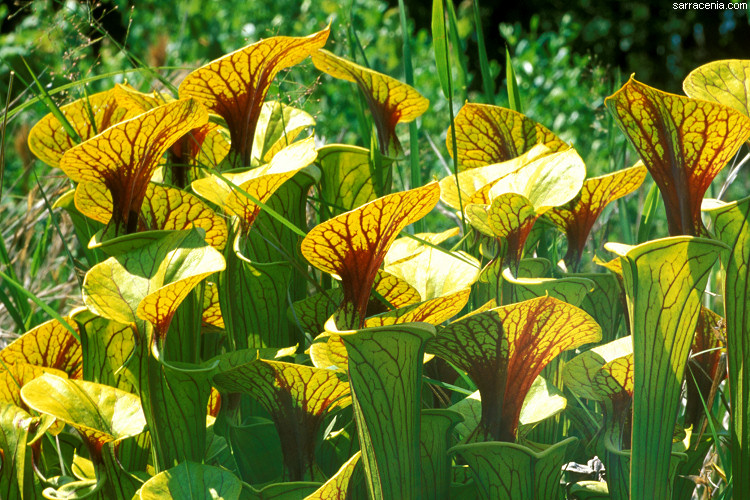
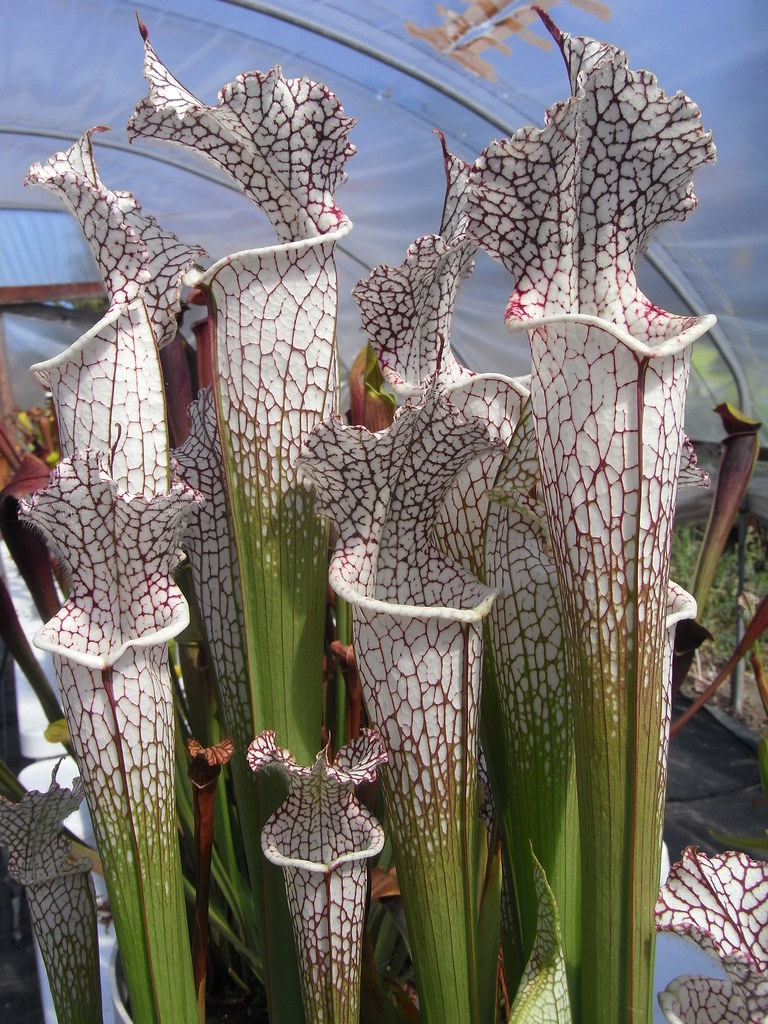

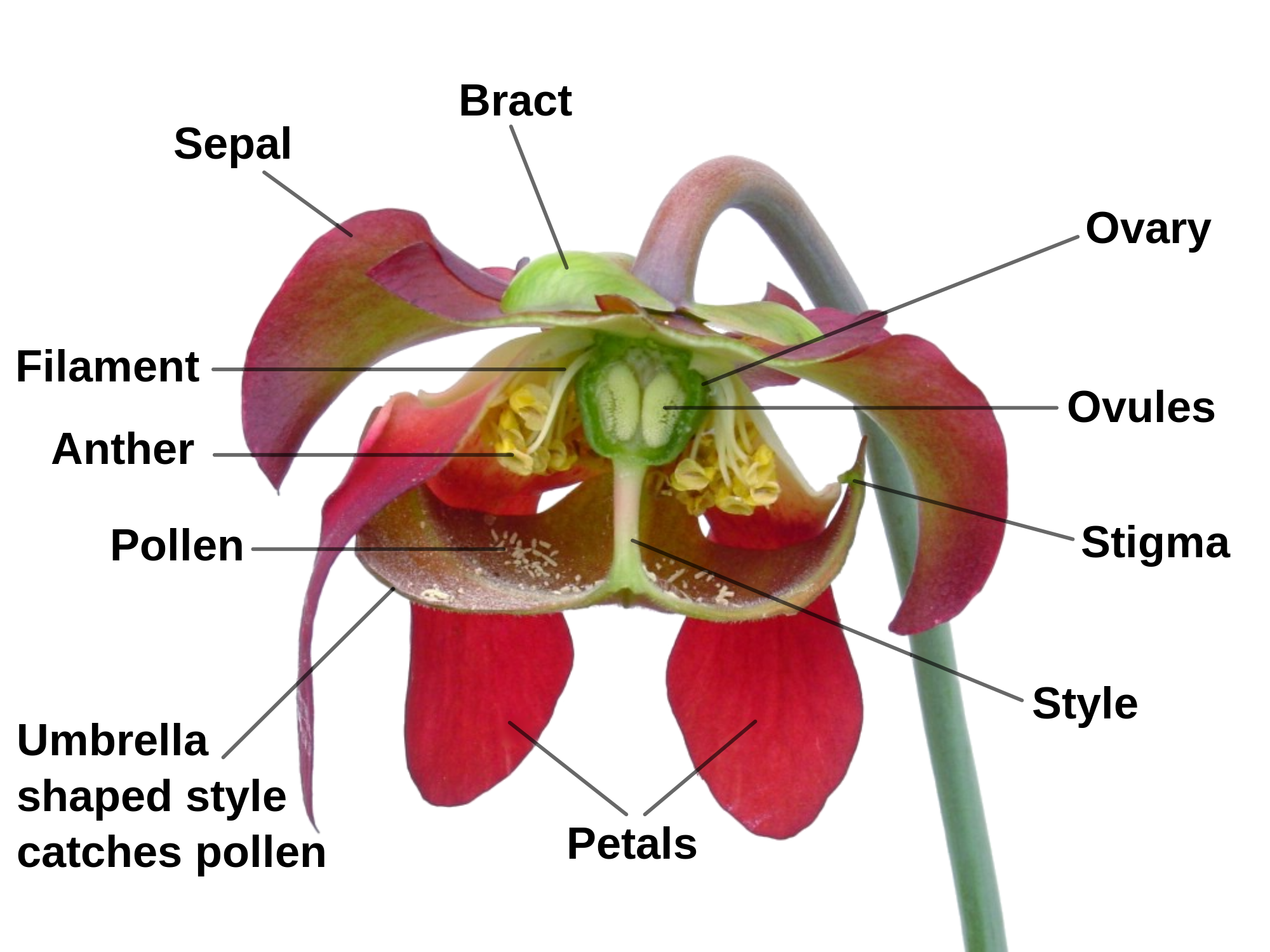
This one attracts prey with the smell of nectar. bugs will walk on it and slip and fall into the pitcher.
inside are tiny hairs pointed downward making it impossible for bugs to crawl out.
in the bottom is a pool of digestive enzymes. this plant has no moving parts.
once the pitcher has had it's fill and can absorb no more nutrients the undigested bugs inside
will start rotting and this may cause the pitcher to start rotting. when this happens the part at the
bottom of the actual pitcher just above the stem will turn brown and dry out. the rest of the pitcher
may remain green for some time, but most of the time it will slowly die off, turn brown and keel over like a dead tree.
this one has fairly spectacular hermaphroditic flowers that grow individually on long stems to rise above the actual pitchers.
once ripe it releases a large amount of pollen.
Occasionally spiders will make webs in the mouths of these pitchers taking advantage of their
nectar lure.
Heliamphora aka Sun pitcher:



similar and related to Sarracenia. included for looks.
Darlingtonia californica aka Cobra lily:
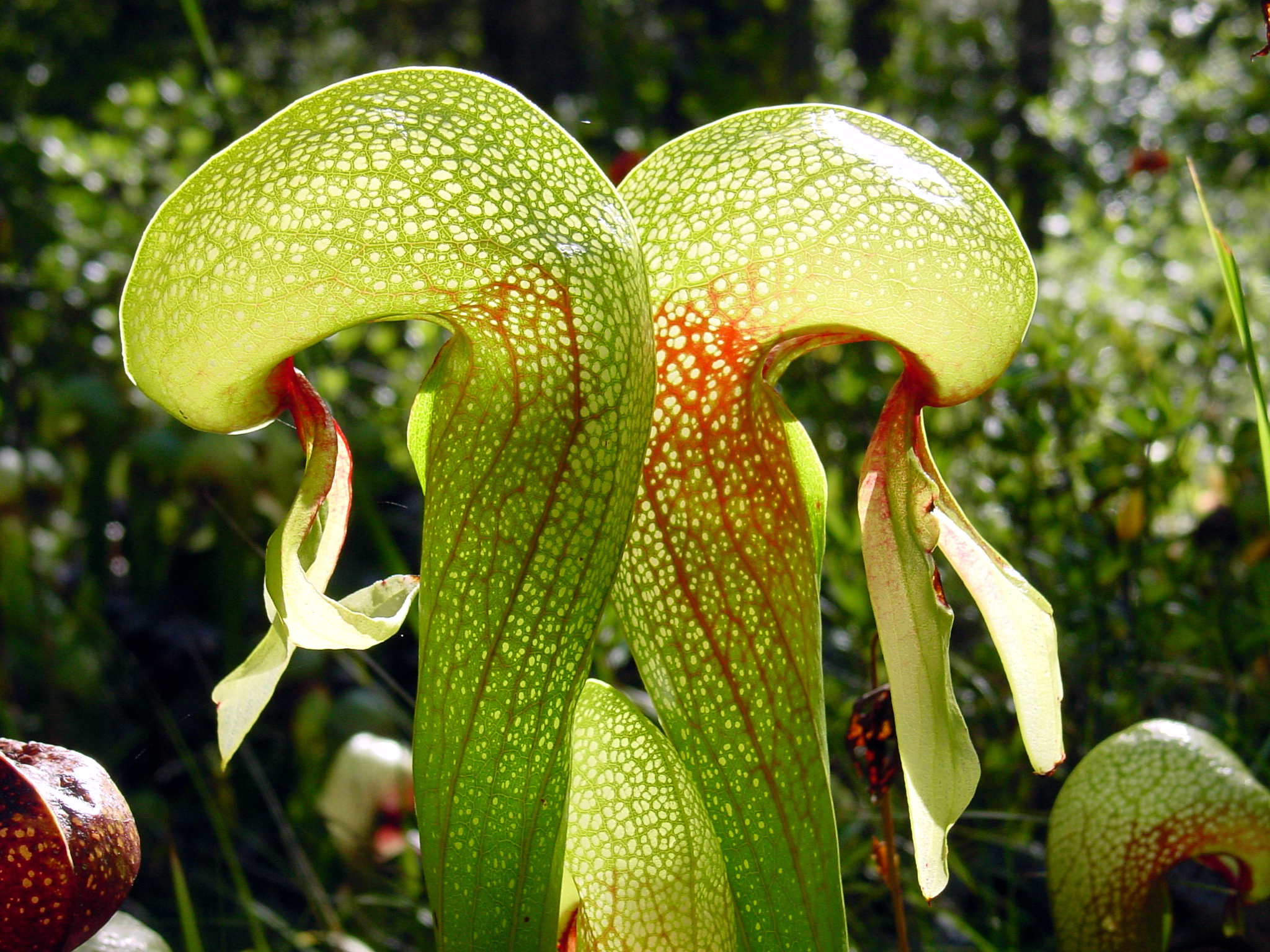



Like the Sarracenia this one attracts it's pray with the scent of nextar. most of it is concentrated on the 'teeth'. the trap works like an upside down bottle type trap.
bugs are attracted by the scent, land on it and at some point find themselves underneath the opening. here the bug will get confused and try to fly up trough the
transparent canopy. after a while it becomes tired and falls down the funnel to be digested by the juices within. small spiders sometimes make their webs in the opening, taking advantage of the lure and
canopy.
it has individual flowers on long stems.
this plant has no moving parts.
Nepenthes aka Hanging pitcher plant:

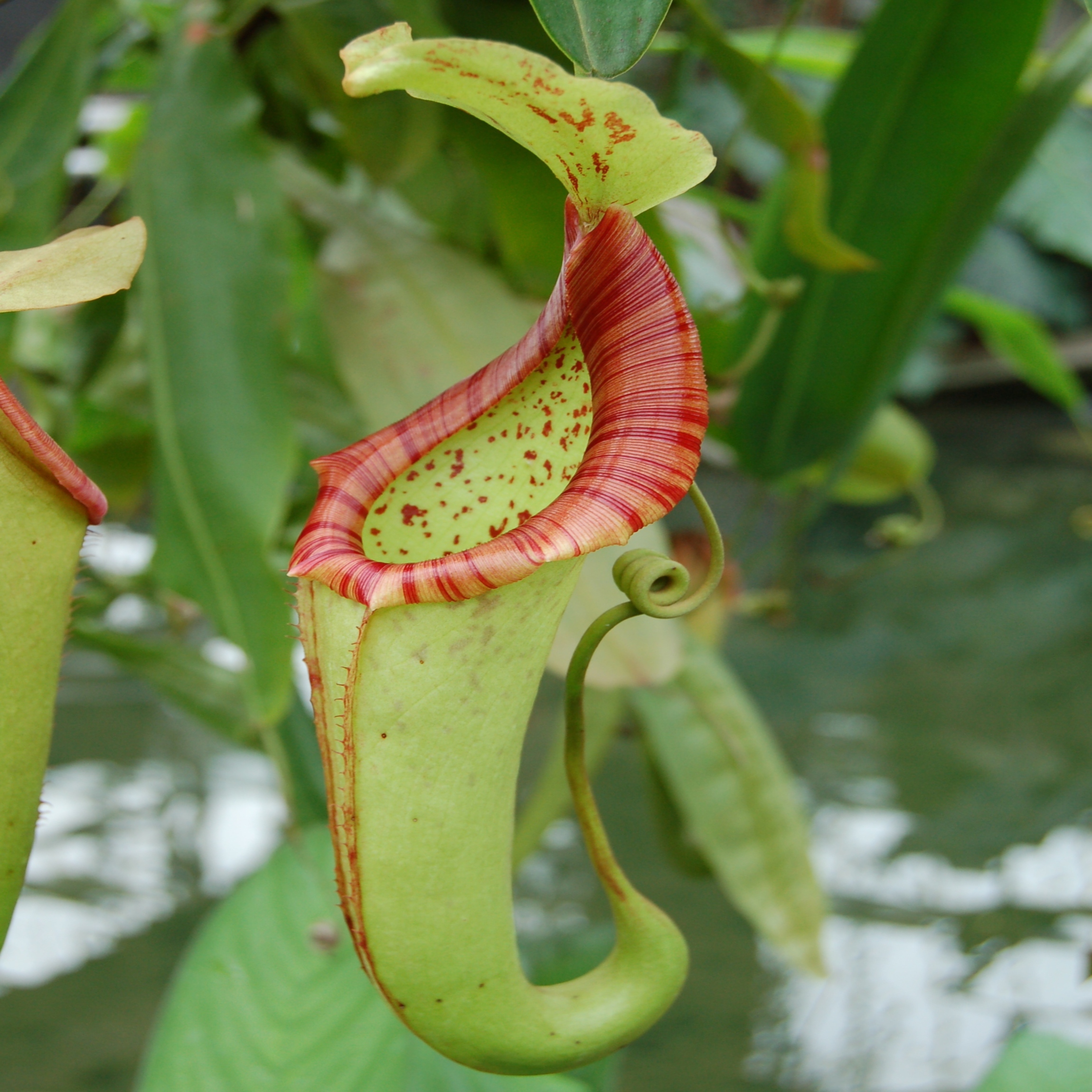
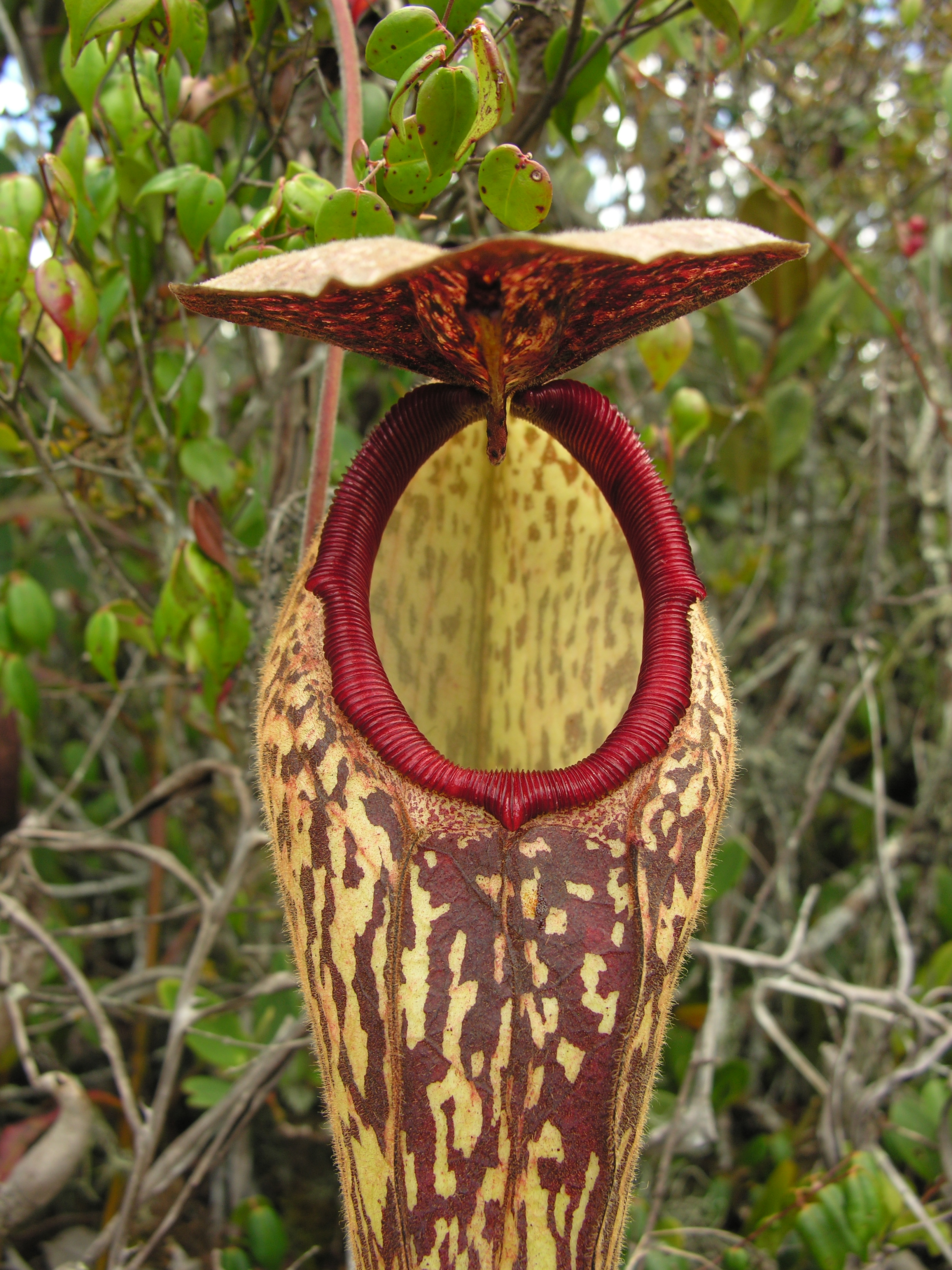
This one is similar to the sarracenia, except it's a hanging plant.
this one is known to occasionally trap small animals that are much to big to digest like small frogs.
the pitchers on these feature a small lid that lifts and drops slowly to regulate the amount of rain it captures.
rainwater aids in keeping the plant humid and digesting it's prey.
the movement of the lids is to slow to be perceptible.
Pinguicula aka Butterwort:

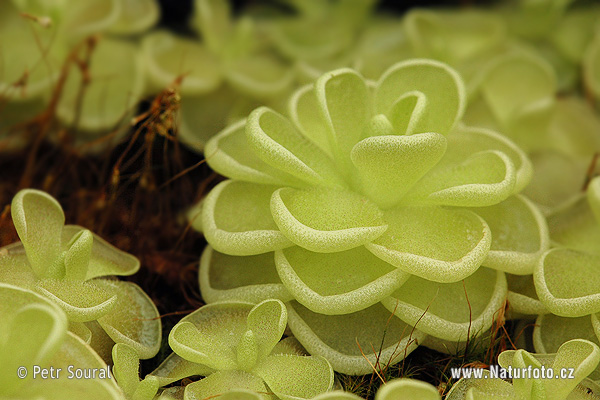


This one has leaves that produce little drops of a sticky substance that serves to both trap the bugs and digest them.
when a bug lands on the leaf it becomes stuck and the leaf very slowly starts to curl it's edged inward and starts producing
more of the sticky substance to soak the bug in a pool of it. it is possible that the insect's struggling is what prompts this.
it varies from species to species how much the leafs curl in. though mostly it does so partially making sure the pool of glue it produces
doesn't spill, in the case of some smaller leafed species it might curl all the way enveloping the bug.
in bright conditions this entire plant may become red, but mostly it will be bright green.
the prey this one attracts are mostly fruit fly sized.
It has interesting flowers that are attached to the stem sort of sideways.
It also has an interesting habit of producing it's own clones; little sprouts will show up underneath
the leaves in fall, and as the leafs die off the fall rain washes them to other places where they sprout the next spring.
Utricularia aka Blatterwort:
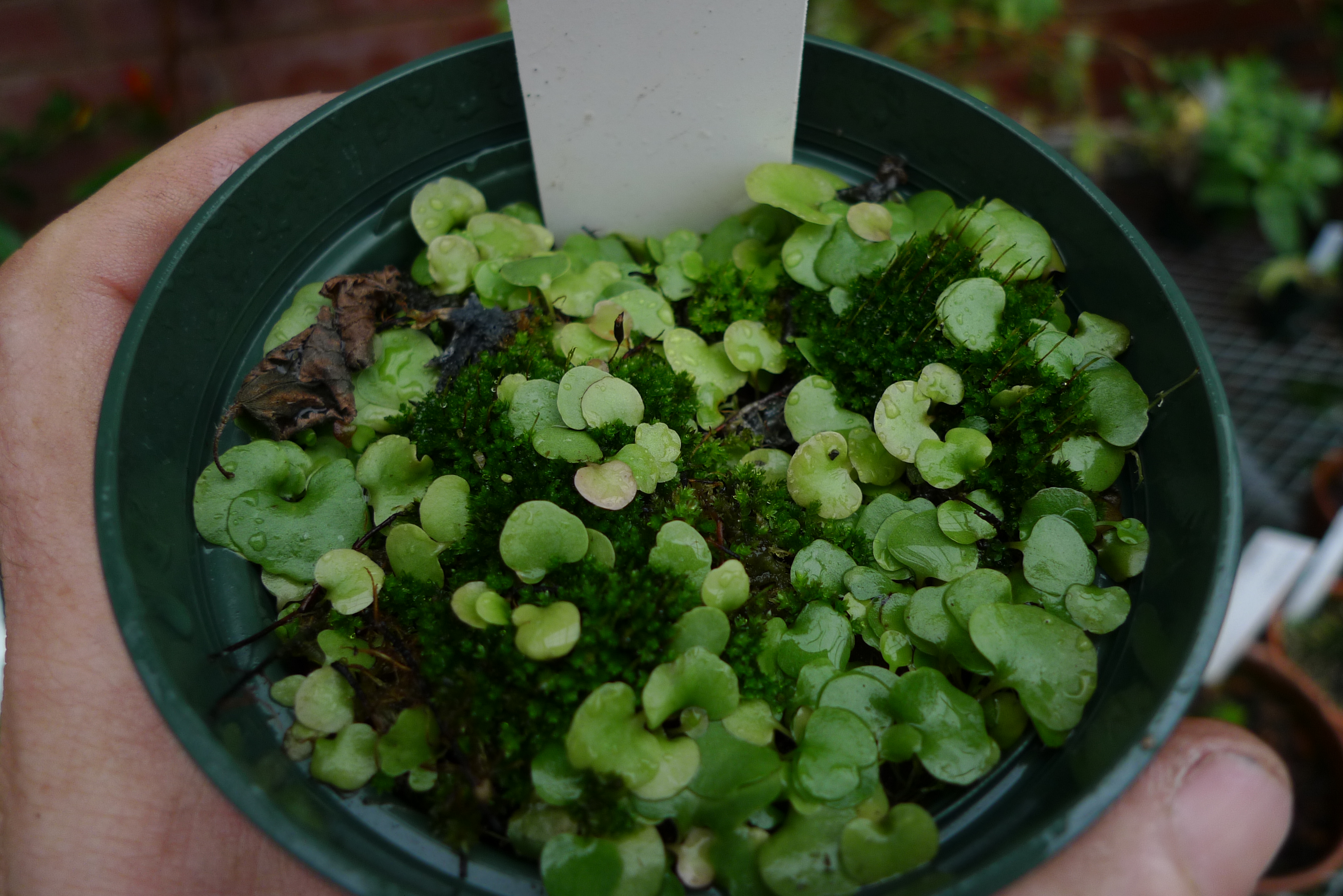



This one is really cool. it is an aquatic plant that traps water bugs. the way it works is that these little bladders grow with a vacuum inside of them.
they have tiny hairs that act like levers and when a bug swims into one of them it opens a flexible 'lid' breaking the seal. when the seal is broken the vacuum
pulls the flexible seal to open up completely which causes the vacuum to suck in a column of water including, if small enough, the bug. once the bladder is
filled the seal closes again, effectively resetting the trap.
Aldrovanda aka Waterwheel:


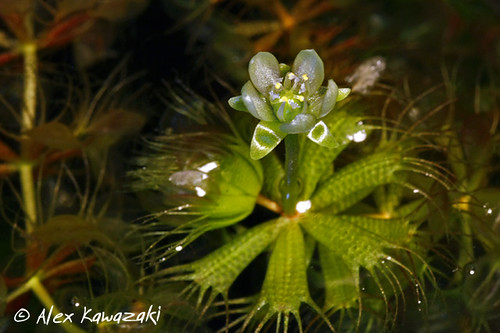
This one has been called a miniature aquatic venus fly trap, and that's pretty much what it is.
Drosera aka Sundew:

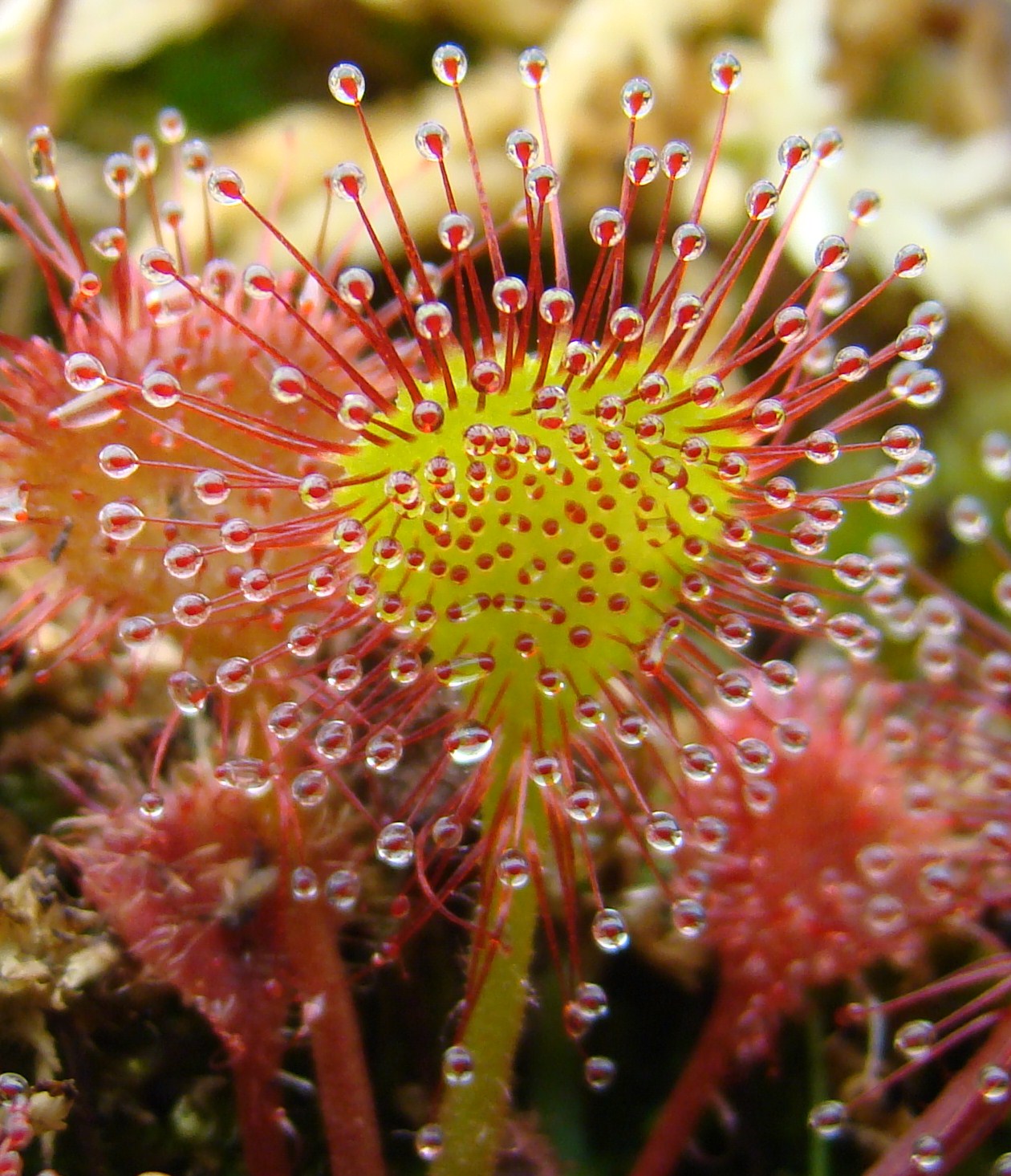
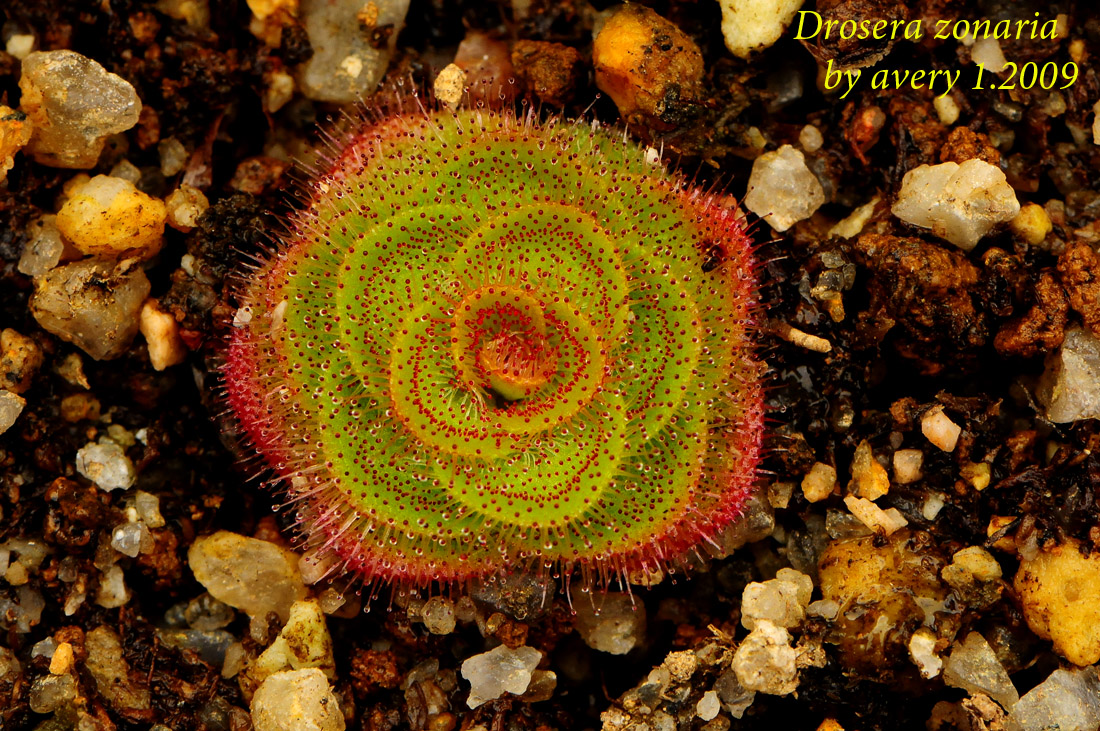
The drosera comes in many shapes and sizes but what they have in common is that they are covered in tiny hairs, each with a drop of a sticky substance.
they work similarly to the Pinguicula but they are the second most animated CP after the venus fly trap. a bug will land on it and get stuck and immediately the
leaf will start wrapping itself around it's victim in a very dramatic way. the globs of fluid work as glue to trap the bug, as a means of digesting the bug but it also
seems to sedate or poison the bug.
There is an entire category of super tiny droserae called 'pygmy drosera'. some of these are no bigger then an inch in diameter.
If it were not for the pot and the moisture, you could use these very plants as props
These plants have the same habit of making it's own clones as the Pingquicula does.

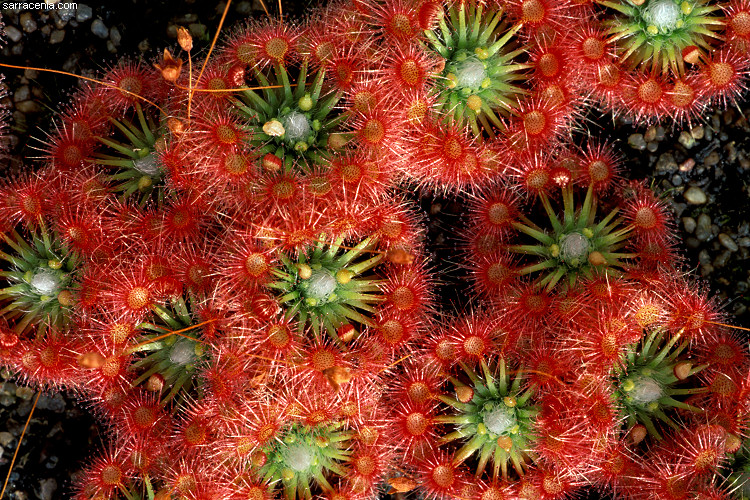


would illustrate some of the species because they would make great crafting projects or custom monsters
for your RPG.
first some common stuff:
Carnivorous plants are plants that have evolved in a low nutrient environments and have
developed alternative ways of getting those nutrients.
Most people tend to assume that since these plants grow in swamps they must like
dark conditions. which is in fact quite wrong. these things need lots of light, preferably indirect,
in order to do well. also they need lots of moisture and must grow in low nutrient substrate
like peat. any kind of fertiliser means certain death.
it is common for these plants to require a lot of light to grow, turn red or have parts that turn red
in good light conditions. the flytrap below for instance is not doing to great. in the right conditions
the insides of the traps could be crimson red.
They come in varieties of tropical and temperate. the temperate ones tend go dormant during winter.
during this period the whole thing dies down to what is beneath the surface and sprouts back up
in spring.
Dionaea muscipula aka Venus fly trap:

This is what dmscotty's videos appear to be inspired by and is the most
animated of all carnivorous plants.
as in most cases the trap parts of the plant are it's leaves.
the way the trap works is that the trap attracts prey with the
smell of rotting meat. the trap is under pressure and
in the middle there are 2 nearly invisible hairs and if they are
touched twice in about 5 seconds the trap will be sprung.
it will then snap shut enough that creatures of a large enough size
will be trapped by it's 'teeth'. it will then slowly close up it's
'lips' over it's prey and start to 'digest' it.
once digested the trap will open up again revealing the
undigested exoskeleton of the bug. if the trap catches bugs more
then once, or a particularly big bug it will reach the limit of
what it can absorb and die off. when the trap turns brown it
may reveal partially digested prey.
plain white flowers grow in a cluster on a long stem.
Sarracenia aka Pitcher plant:




This one attracts prey with the smell of nectar. bugs will walk on it and slip and fall into the pitcher.
inside are tiny hairs pointed downward making it impossible for bugs to crawl out.
in the bottom is a pool of digestive enzymes. this plant has no moving parts.
once the pitcher has had it's fill and can absorb no more nutrients the undigested bugs inside
will start rotting and this may cause the pitcher to start rotting. when this happens the part at the
bottom of the actual pitcher just above the stem will turn brown and dry out. the rest of the pitcher
may remain green for some time, but most of the time it will slowly die off, turn brown and keel over like a dead tree.
this one has fairly spectacular hermaphroditic flowers that grow individually on long stems to rise above the actual pitchers.
once ripe it releases a large amount of pollen.
Occasionally spiders will make webs in the mouths of these pitchers taking advantage of their
nectar lure.
Heliamphora aka Sun pitcher:



similar and related to Sarracenia. included for looks.
Darlingtonia californica aka Cobra lily:



Like the Sarracenia this one attracts it's pray with the scent of nextar. most of it is concentrated on the 'teeth'. the trap works like an upside down bottle type trap.
bugs are attracted by the scent, land on it and at some point find themselves underneath the opening. here the bug will get confused and try to fly up trough the
transparent canopy. after a while it becomes tired and falls down the funnel to be digested by the juices within. small spiders sometimes make their webs in the opening, taking advantage of the lure and
canopy.
it has individual flowers on long stems.
this plant has no moving parts.
Nepenthes aka Hanging pitcher plant:



This one is similar to the sarracenia, except it's a hanging plant.
this one is known to occasionally trap small animals that are much to big to digest like small frogs.
the pitchers on these feature a small lid that lifts and drops slowly to regulate the amount of rain it captures.
rainwater aids in keeping the plant humid and digesting it's prey.
the movement of the lids is to slow to be perceptible.
Pinguicula aka Butterwort:




This one has leaves that produce little drops of a sticky substance that serves to both trap the bugs and digest them.
when a bug lands on the leaf it becomes stuck and the leaf very slowly starts to curl it's edged inward and starts producing
more of the sticky substance to soak the bug in a pool of it. it is possible that the insect's struggling is what prompts this.
it varies from species to species how much the leafs curl in. though mostly it does so partially making sure the pool of glue it produces
doesn't spill, in the case of some smaller leafed species it might curl all the way enveloping the bug.
in bright conditions this entire plant may become red, but mostly it will be bright green.
the prey this one attracts are mostly fruit fly sized.
It has interesting flowers that are attached to the stem sort of sideways.
It also has an interesting habit of producing it's own clones; little sprouts will show up underneath
the leaves in fall, and as the leafs die off the fall rain washes them to other places where they sprout the next spring.
Utricularia aka Blatterwort:




This one is really cool. it is an aquatic plant that traps water bugs. the way it works is that these little bladders grow with a vacuum inside of them.
they have tiny hairs that act like levers and when a bug swims into one of them it opens a flexible 'lid' breaking the seal. when the seal is broken the vacuum
pulls the flexible seal to open up completely which causes the vacuum to suck in a column of water including, if small enough, the bug. once the bladder is
filled the seal closes again, effectively resetting the trap.
Aldrovanda aka Waterwheel:


This one has been called a miniature aquatic venus fly trap, and that's pretty much what it is.
Drosera aka Sundew:



The drosera comes in many shapes and sizes but what they have in common is that they are covered in tiny hairs, each with a drop of a sticky substance.
they work similarly to the Pinguicula but they are the second most animated CP after the venus fly trap. a bug will land on it and get stuck and immediately the
leaf will start wrapping itself around it's victim in a very dramatic way. the globs of fluid work as glue to trap the bug, as a means of digesting the bug but it also
seems to sedate or poison the bug.
There is an entire category of super tiny droserae called 'pygmy drosera'. some of these are no bigger then an inch in diameter.
If it were not for the pot and the moisture, you could use these very plants as props

These plants have the same habit of making it's own clones as the Pingquicula does.









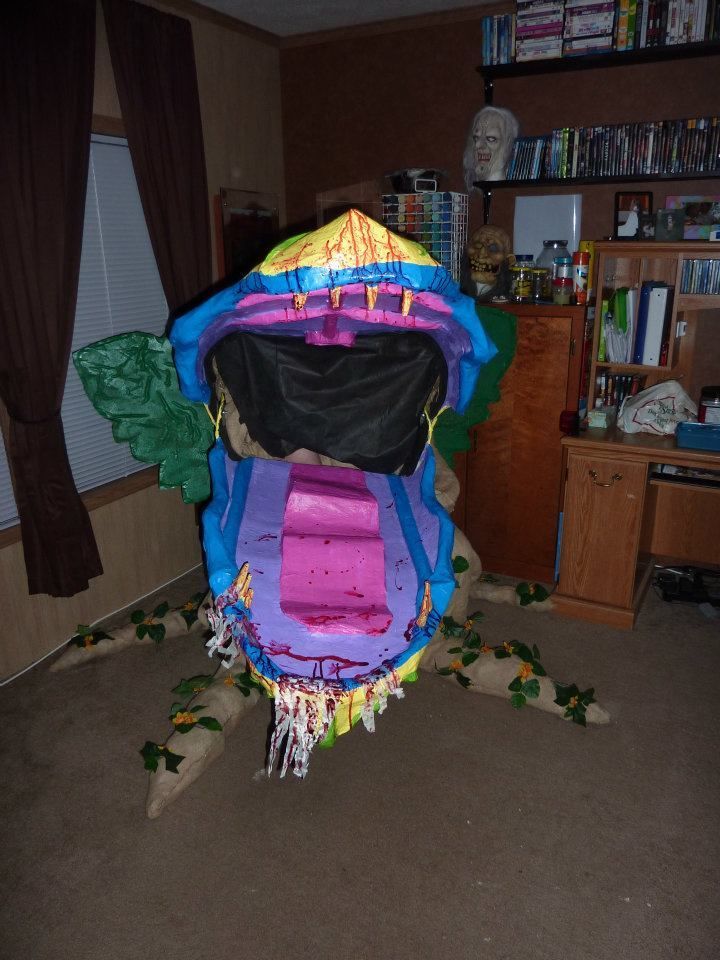
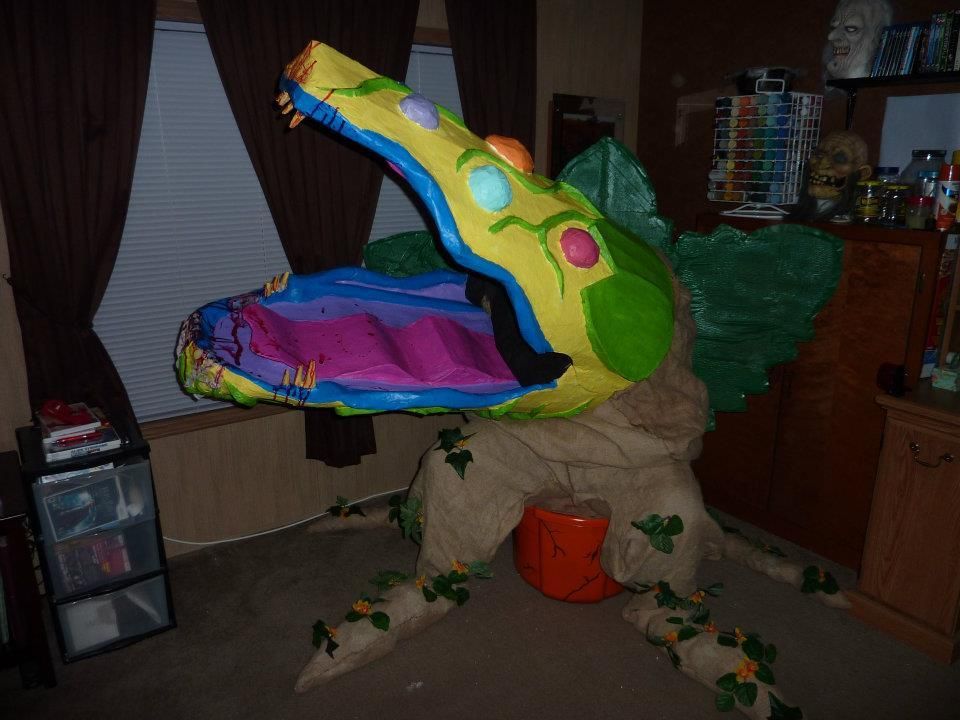

 Cheers!
Cheers! Cheers!
Cheers!